The question whether (all) disabilities will be (completely) healed in the resurrection resonates deeply with me on a personal level. I write as a man who was born with a physical disability, a neuromuscular disorder resulting from in-utero exposure to rubella, or German measles. The effects of this exposure were primarily mobility-related, though I do also have some hearing loss, vision problems, and a slight speech impediment.
 I primarily use a power wheelchair for mobility, though I also use crutches for short walking distances. In recent years especially, I’ve increasingly struggled with chronic pain and other ongoing health issues. My stamina and energy levels have declined over time, especially these past several years. The realities of embodiment—including aging and degeneration—are a part of my everyday lived experience.
I primarily use a power wheelchair for mobility, though I also use crutches for short walking distances. In recent years especially, I’ve increasingly struggled with chronic pain and other ongoing health issues. My stamina and energy levels have declined over time, especially these past several years. The realities of embodiment—including aging and degeneration—are a part of my everyday lived experience.
So, as you can imagine, this question is more than just an intellectual exercise for me. When we think about it, though, this question is really of relevance to all of us—for if we live long enough, virtually every one of us will experience some degree of disability during our lives, if only the increasing limitations associated with the aging process.
Starting Points
Before addressing the question head-on, let’s begin with what we do know (already) about creation, disability, and the eternal state.
Regarding creation, we know that creation itself is good, and that as created by God, human beings were deemed by him to be “very good” (Gen 1:31). Importantly, although humans were created without sin, they were not “perfect” in the sense of being limitless—only God is without limit.See Thomas E. Reynolds, Vulnerable Communion: A Theology of Disability and Hospitality (Grand Rapids, MI: Brazos Press, 2008), 18–19, for further discussion of this point. This has two crucial implications. First, given the ubiquitous nature of human limitation, we should resist the all-too-common temptation to equate disability (one form of human limitation) with a reduction in the value or worth of lives characterized by disability. After all, we’re all limited in one way or another, whether or not we’re considered to be “disabled.” Second, the fact that human beings were created with limits means that the human telos is not to be “restored” to some state of limitlessness that never characterized human beings in the first place.Here I follow the thought of Brian Brock, Amos Yong, Thomas Reynolds, and others. See, e.g., Brock, Disability: Living into the Diversity of Christ’s Body (Grand Rapids, MI: Baker Academic, 2021), 66–69.
Regarding disability, we know that while sinful actions can sometimes be part of the causal chain that leads to the experience of disability (e.g., paralysis resulting from injuries sustained in a drunk driving accident), there is no necessary connection between individual (personal) sin and disability. Jesus himself makes this point crystal clear in John 9, when in response to the question “who sinned, this man or his parents, that he was born blind?” he explicitly challenges the assumption underlying the question—namely, that the man born blind somehow deserved to be disabled because of either his own or his progenitors’ sins—affirming instead that “neither this man nor his parents sinned … but this happened so that the works of God might be displayed in him” (John 9:2–3). In his sovereign wisdom, God sometimes allows disability to enter peoples’ lives—and instead of that being a sign of his disfavor, judgement, or punishment, it is (for many) the starting point of his gracious, powerful activity in and through the lives of persons with disabilities and those around them.For more on disability as the site, or locus, of God’s gracious and powerful activity, with a focus on the man born blind, see Ben Rhodes, “Signs and Wonders: Disability in the Fourth Gospel,” Journal of the Christian Institute on Disability, 5.1 (Spring/Summer 2016), 53–76.
Regarding the eternal state, though scripture does not spell out in detail what our existence will be like, we do know several things for certain. First, we will have “glorified” bodies and minds that, along with the rest of creation, have been fully redeemed (Rom 8:23; 1 Cor 15:35–58). Whatever else that means specifically, surely we can conclude that our transformed bodies and minds will be good—yea, even very good—along with all else that exists in the new creation. Second, there will be at least some continuity between who we are in this life and who we are in the next: I will be recognizable as me, you will be recognizable as you, and so forth (Matt 17:1–3; Luke 16:19–31; John 20:24–31; 1 Cor 15:3–8). Finally, we are assured in Revelation 21:4 that there will be no more tears in the eternal, heavenly state. This much is clear: whatever the ultimate answer is to the question whether disabilities (or their “marks”) will in any sense be retained in the resurrection, we can rest assured that there will be no more pain, no more suffering, no more discomfort, frustration, discrimination, social oppression, or any of the other things that cause us sorrow in this life.
Disability in Heaven?
So, then, to address the question directly: Will there be wheelchairs, scooters, walkers, canes, hearing aids, or speech synthesizers in the eternal state? Do I expect to be cruising around heaven in a wheelchair (“souped up” with jet packs or not)? No, not really—or, at least, it’s hard to imagine these things. But do I think there may still be some kind of mark, or visible reminder, or representation, of the disability I had this side of eternity? I think that’s possible, for my disability is now and will have been one of the principal ways in which God’s gracious activity and power was made manifest in me (2 Cor 12:9–10). And since our created purpose is (in the words of the Westminster Shorter Catechism) to “glorify God, and to enjoy him forever,”In some ways, my answer to the question posed in this Areopagite is an agnostic one. then it stands to reason that part of that purpose may include retaining some kind of visible reminder or representation of God’s glorious work in my life.
In some ways, my answer to the question posed in this Areopagite is an agnostic one: ultimately, there is more that we don’t know about the afterlife than we do know. In other ways, my response might be viewed as a sort of hybrid of the traditional and more recent views. On the one hand, I concur with Yong, Brock, and others in affirming that viewing disability primarily or exclusively as a “defect” to be “fixed,” at least in the afterlife if not in the here and now, can have deleterious implications for how we view and treat persons with disabilities in the here and now. Indeed, as Brock argues, we need a broader, more robust view of disability that does not begin with “sin” or “the fall” as the starting point. Instead, we should continually affirm the goodness of God’s creation, the inviolable dignity of all human beings (who were created in and retain the image of God, regardless of their “abled” or “disabled” status) and, perhaps most importantly, the central reality that rather than being afterthoughts or accidents in God’s redemptive plan, persons with disabilities are actually crucial to the life of the kingdom, and indeed to the everyday life of the church—not as objects to be pitied or recipients of charity, but as fellow ministers of the gospel and of the grace of God to his people.For specific application in the context of disability, see Devan Stahl and John F. Kilner, “The Image of God, Bioethics, and Persons with Profound Intellectual Disabilities,” Journal of the Christian Institute on Disability, 6.1–2 (Spring/Summer & Fall/Winter 2017), 19–40. As Helen Kim puts it, “a disability describes me as much as my hair color, eye color, and height; but it doesn’t define me nor does it disqualify me from God’s service.” Quoted in Bethany McKinney Fox, Disability and the Way of Jesus: Holistic Healing and the Way of Jesus (Downers Grove, IL: IVP Academic, 2019), 185. To these claims made by Yong, Brock and others, I say a hearty “amen.”
At the same time, given the phenomenological realities of many (if not all) disabilities, including their frequent association with pain, discomfort, and other negative experiences, as well as their causal roots in a complex interplay of biological, psychosocial, cultural, and other factors (social discrimination, oppression, genetic anomalies, etc.) that have been marred by the effects of the fall, I still find myself drawn toward the notion that “disabilities” as such will no longer exist in the eternal state. The new creation, I suspect, will be so different from our current reality (1 Cor 2:9) that the very notion of “disability” will cease to have meaning for us.
Importantly, affirming that disability will be “healed” in the resurrection need not entail holding a derogatory view of the lives of persons with disabilities this side of eternity. In particular, it need not entail neglecting, excluding, or marginalizing them from the life of the church (or society in general, for that matter). To the contrary, if we recognize that Jesus allowed himself to experience a kind of “disablement” in his passion (he was blindfolded, wounded, etc.), and if that was central to God’s redemptive plan and gracious activity in our world, then it seems reasonable to anticipate—and even expect—that disability would be one of the central ways in which God’s power and activity would “show up,” especially in the everyday life of the church. And if that is the case, then there is every reason to cherish, honor, and celebrate the lives of persons with disabilities, even while acknowledging the challenges often associated with disability. The point is: we should look for God’s gracious activity in the lives of persons with disabilities—not just in a passive sense, but in an active one as well (e.g., recognizing their capacities for leadership in ministry and service) rather than ignoring, excluding, marginalizing, or telling persons with disabilities simply to wait till they’re eventually healed in the resurrection.
Conclusion
In thinking about these matters, I find Makoto Fujimura’s description of the Japanese practice of kintsugi to be helpful. As Fujimura describes it in his recent book Art and Faith: A Theology of Making, kintsugi refers to the ancient Japanese practice of restoring broken pieces of ceramic using a gold filling. The result is an artifact that simultaneously retains certain characteristics of the original, unbroken ceramic while also taking on new characteristics as well. In the end, the “restored” work possesses an even greater beauty than it had originally, reflecting the painstaking restorative and creative work done by the artist. In the same way, I believe, we can anticipate that God’s restorative and creative work in all our lives will be evident for all to see in the eternal state. Indeed, God’s redeeming power will shine through the “cracks” of our lives, redounding to his glory in never-ending praise that will go on for eternity.
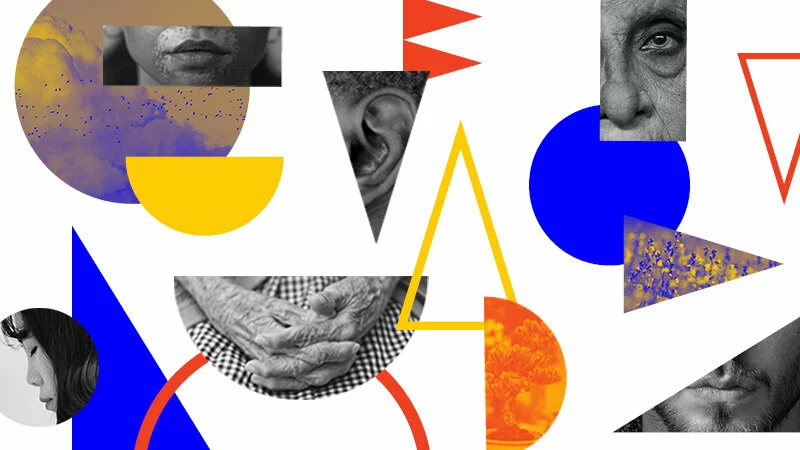

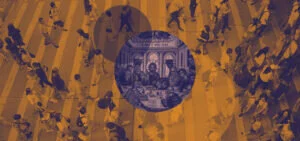
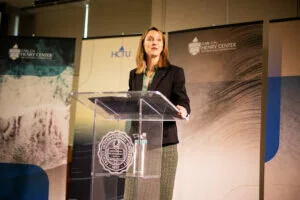
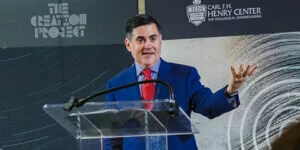
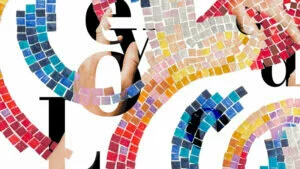
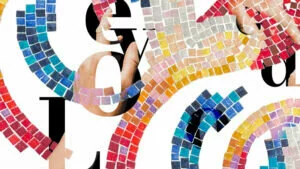
Comments
Be the first one to make a comment!